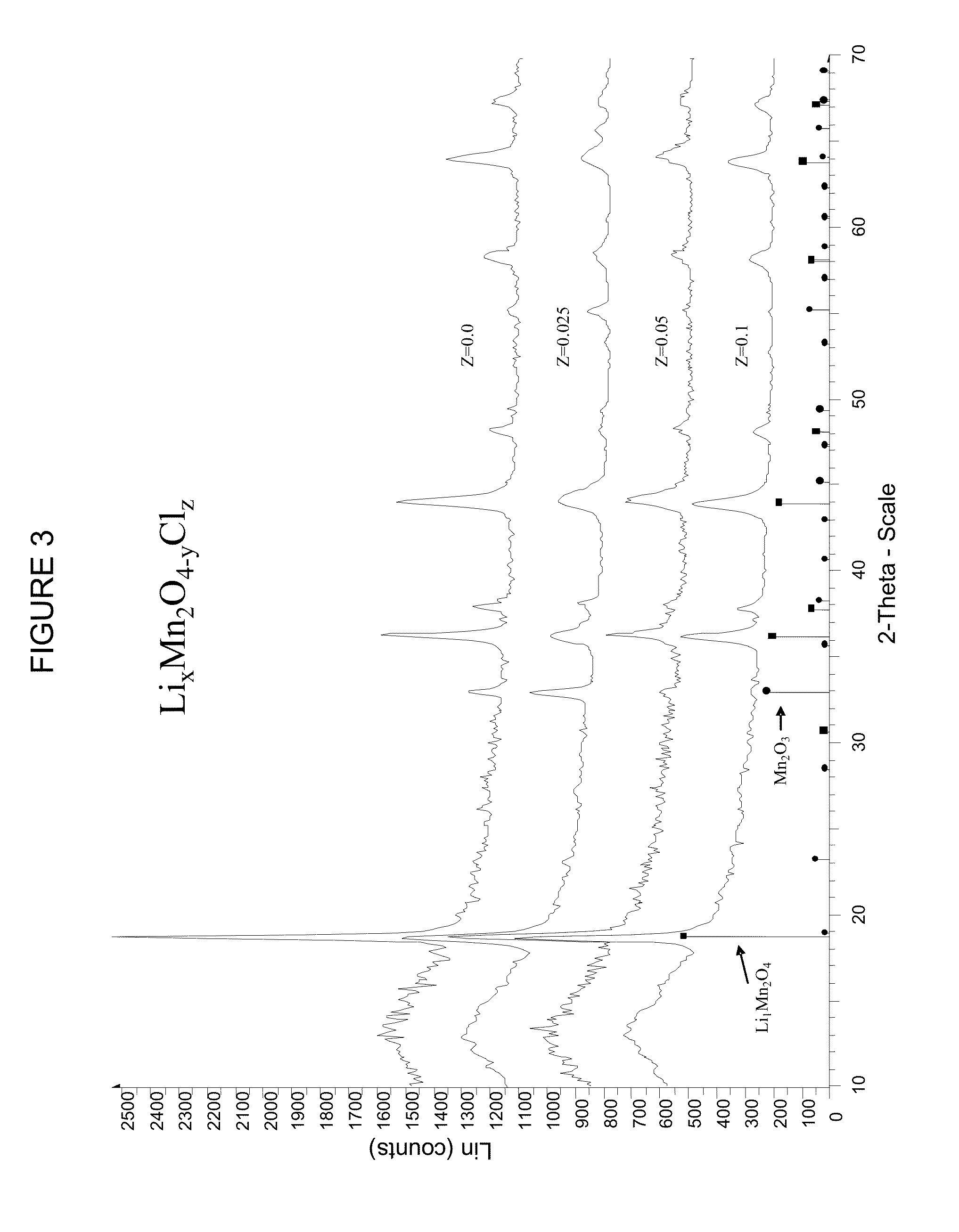Chlorine modified high voltage LiMn2O4 cathode material for rechargeable lithium/lithium-ion electrochemical systems
a lithium-lithium-ion battery and high-voltage technology, applied in the field of electrochemical power sources, can solve the problems of limiting the practical number of cycles that may be used, the capacity fading is a major problem, so as to improve the performance, enhance the over-charge potential behavior, and increase the discharge potential
- Summary
- Abstract
- Description
- Claims
- Application Information
AI Technical Summary
Benefits of technology
Problems solved by technology
Method used
Image
Examples
Embodiment Construction
[0037]FIG. 1 is a flowchart illustrating process steps in an exemplary embodiment of the present disclosure. More specifically, FIG. 1 shows exemplary steps according to the present disclosure for the preparation of LixMn2O4-yClz material via a solid state reaction. In step S100, a chlorine-containing lithium compound is added to a manganese compound and a lithium compound. The stoichiometric ratio of lithium to manganese to chlorine (Li:Mn:Cl) in the mixture of starting materials may be (0.9-1.1):2.0:(0.005-0.25); (0.9-1.1):2.0:(0.0125-0.075); or 1.0:2.0:(0.015-0.035).
[0038]Suitable chlorine-containing lithium compounds include, but are not limited to, LiClO4 and LiCl. Suitable manganese compounds include, but are not limited to, MnO2, Mn2O3 or Mn3O4. Additionally, manganese nitrate, manganese hydroxide and manganese acetate are also suitable manganese compounds. Suitable lithium compounds include, but are not limited to, lithium carbonate (Li2CO3), LiOH, Li2O, and Li2O2.
[0039]In S...
PUM
| Property | Measurement | Unit |
|---|---|---|
| temperature | aaaaa | aaaaa |
| voltage | aaaaa | aaaaa |
| voltage | aaaaa | aaaaa |
Abstract
Description
Claims
Application Information
 Login to View More
Login to View More - R&D
- Intellectual Property
- Life Sciences
- Materials
- Tech Scout
- Unparalleled Data Quality
- Higher Quality Content
- 60% Fewer Hallucinations
Browse by: Latest US Patents, China's latest patents, Technical Efficacy Thesaurus, Application Domain, Technology Topic, Popular Technical Reports.
© 2025 PatSnap. All rights reserved.Legal|Privacy policy|Modern Slavery Act Transparency Statement|Sitemap|About US| Contact US: help@patsnap.com



